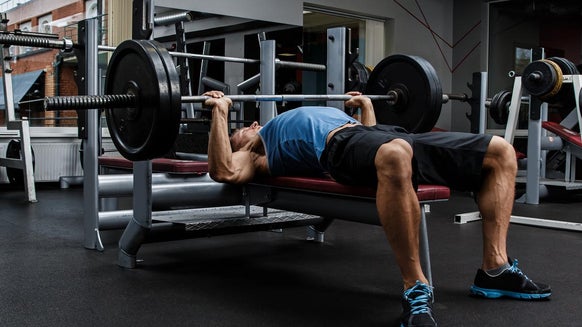How To Foam Roll | Explanation & Training Benefits

Foam rolling is an often overlooked tool for training. Getting on the roller before and after your workout can help in many ways, including reduced DOMS, faster recovery and improved range of movement.
With the MyPRO x Pulseroll foam roller, you can take your recovery to the next level. The vibrations can reach deep muscles to help relieve aches and soreness, but correct technique must be used to unlock its full benefits.
What is foam rolling?
Select the right foam roller
Sometimes, a hockey or golf ball can be used as an alternative. They’re much smaller than a foam roller, and may be useful for targeting specific areas that a foam roller isn’t able to pinpoint. The principles behind both sets of kit are largely the same. The reason for this is to target the smaller muscles and target very specific areas of tightness or pain.
Foam Rolling Technique
Apply pressure to the required area
Get your timing right
Make sure you’re rolling in the right direction
Joint Positions
Timing
Common Foam Rolling Mistakes
Using a foam roller on your joints: Myofascial release helps your muscles. Rolling over joints will not only be painful, but also quite ineffective when it comes to myofascial release. Rolling over bruised areas: While foam rolling is great for myofascial release, if you have recently injured a body part and there is currently bruising, then foam rolling may not be the best thing to be doing in that area. Using too much pressure: Foam rolling is expected to cause discomfort, but if it starts to cause pain, then you’re putting too much pressure on that area.
Benefits of Foam Rolling
Short-term flexibility increases
Long-term flexibility increases
Reduction of DOMS
Arterial function and vascular endothelial function
Take Home Messages
There is strong evidence to show that it can help improve your range of movement in the short-term, as well as reduce DOMS following exercise. There is some mixed evidence to show it may help improve range of movement in the long-run and improve blood flow to muscles.
READ MORE HERE:

Cool Downs — What You Can & Can’t Afford To Skip
You might be surprised by the answer.

8 Great Hamstring Stretches To Combat Tight Thighs
Simple stretches to try at home.

1) Beardsley, C., Skarabot, J., 2015. Effects of self-myofascial release: A systematic review. J Bodyw Mov Ther
2) MacDonald, G.Z., Penney, M.D., Mullaley, M.E., Cuconato, A.L., Drake, C.D., Behm, D.G., Button, D.C., 2013. An acute bout of self-myofascial release increases range of motion without a subsequent decrease in muscle activation or force. J. Strength Cond. Res. 27, 812e821.
3) Halperin, I., Aboodarda, S.J., Button, D.C., Andersen, L.L., Behm, D.G., 2014. Roller massager improves range of motion of plantar flexor muscles without subsequent decreases in force parameters. Int. J. Sports Phys. Ther
4) Jay, K., Sundstrup, E., Sondergaard, S.D., Behm, D., Brandt, M., Saervoll, C.A., Jakobsen, M.D., Andersen, L.L., 2014. Specific and crossover effects of massage for muscle soreness: randomized controlled trial. Int. J. Sports Phys. Ther
5) Miller, J.K., Rockey, A.M., 2006. Foam rollers show no increase in the flexibility of the hamstring muscle group. J. Undergrad. Res.
6) Ebrahim, A.W., Elghany, A.W., 2013. The effect of foam roller exercise and nanoparticle in speeding healing of sport injuries. J. Am. Sci
7) Pearcey, G.E., Brandbury-Squires, D.J., Kawamoto, J.E., Drinkwater, E.J., Behm, D.G., Button, D.C., 2014. Foam rolling for delayed-onset muscle soreness and recovery of dynamic performance measures. J. Athl. Train.
8) Jay, K., Sundstrup, E., Sondergaard, S.D., Behm, D., Brandt, M., Saervoll, C.A., Jakobsen, M.D., Andersen, L.L., 2014. Specific and crossover effects of massage for muscle soreness: randomized controlled trial. Int. J. Sports Phys. Ther. 9, 82e91.
9) Okamoto, T., Masuhara, M., Ikuta, K., 2014. Acute effects of selfmyofascial release using a foam roller on arterial function. J. Strength Cond. Res.Quere´, N., Noe¨l, E., Lieutaud, A., d’Alessio, P., 2009. Fasciatherapy combined with pulsology touch induces changes in blood turbulence potentially beneficial for vascular endothelium. J. Bodyw. Mov. Ther.
10) Hedley, G., 2010. Notes on visceral adhesions as fascial pathology. J. Bodyw. Mov. Ther.
11) Chaitow, L., 2009. Research in water and fascia. Micro-tornadoes, hydrogenated diamonds & nanocrystals. Massage Today
12) Findley, T., Chaudhry, H., Stecco, A., Roman, M., 2012. Fascia researchea narrative review. J. Bodyw. Mov. Ther.
13) Tozzi, P., 2012. Selected fascial aspects of osteopathic practice. J. Bodyw. Mov. Ther.
14) Wiewelhove, T., et al, 2019. A Meta-Analysis of the Effects of Foam Rolling on Performance and Recovery.
15) Behm G, D., 2020. Foam Rolling Prescription: A Clinical Commentary











